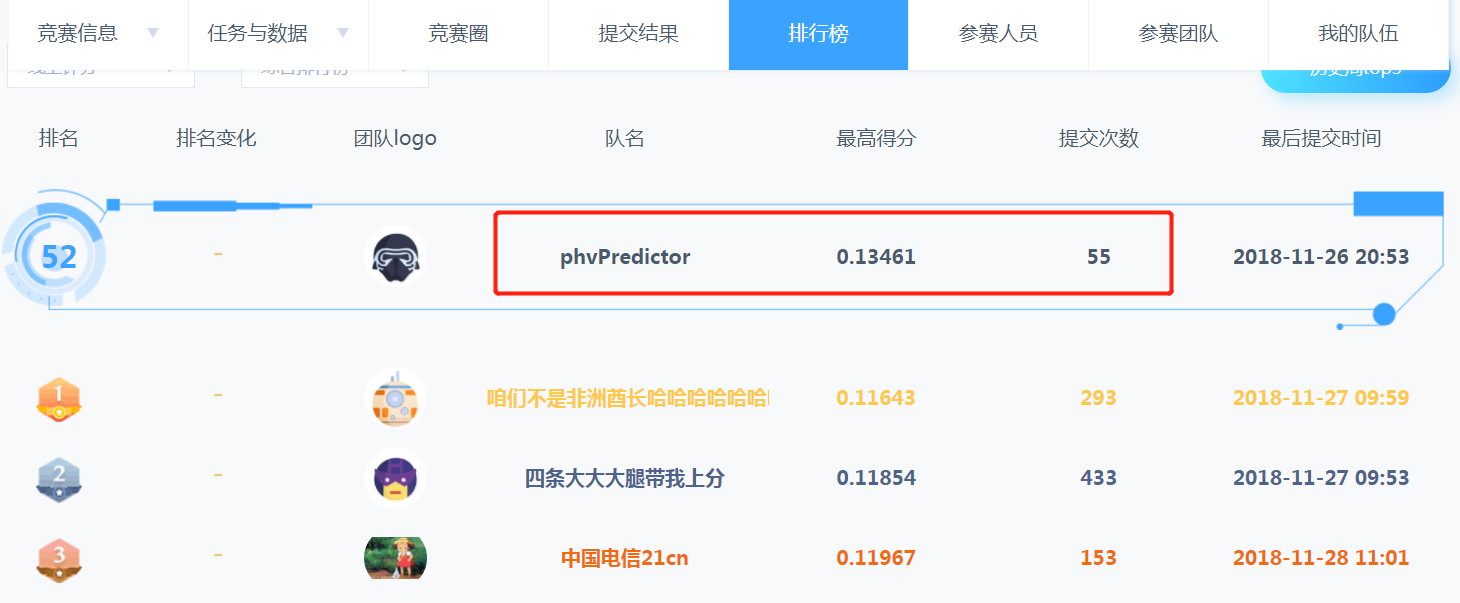phv
光伏短期功率预测大赛
李家翔,武睿琦,靳晓松 2023-02-06
模型融合
我们尝试的模型融合有
- 神经网络模型
- Xgboost模型
- 时间序列模型
- 基于概率模型的融合
结论
本次比赛,我们主要的实现方式是神经网络模型,最终的排名是52名。我们的特征工程涵盖了时间相关变量、平方项、立方项、比率、滚动SMA、滚动方差、PCA主成分、实发辐射的测试集预测值、NMF衍生变量、prophet等,而模型融合则涵盖了神经网络模型、Xgboost模型、时间序列模型以及基于概率模型的融合。
光伏短期功率预测大赛
这个项目是参加国能日新的光伏短期功率预测大赛的结稿。我们的团队名为
PHotoVoltaic (phv),最终排名是52名。
在这个比赛中,我们尝试了一系列的特征工程和模型融合,以提高模型的性能。在特征工程方面,我们加入了时间相关变量、平方项、立方项、比率、滚动SMA、滚动方差、PCA主成分、实发辐射的测试集预测值、NMF衍生变量、prophet等;在模型融合方面,我们尝试了神经网络模型、Xgboost模型、时间序列模型以及基于概率模型的融合。
我们的实现方式主要是神经网络模型,具体见Python代码wushen.ipynb,而Xgboost的融合则见R代码note.Rmd。我们也使用了trelliscope来进行EDA,交互方便,但是不适合上线部署,不便于交流。
最终,我们的模型达到了较好的效果,跑出了52名的排名。

EDA
使用trelliscope,交互方便,但是不适合上线部署,不便于交流。
后续可以做的空间
深度学习的方法
- 可以采用空洞卷积的方法(A. van den Oord et al. 2016a; A. van den Oord et al. 2016b; Sprangers, Schelter, and Rijke 2022; Kechyn et al. 2018),这种方法可以用于一些其他的应用,比如音频的频谱、长时间序列等。
XGBoost
- 由于比赛过程中主办方修改了数据集和评价函数,我们无法复现原来的历史预测,因此,我们没有将神经网络和XGboost进行融合,这也是我们下一次比赛需要注意的问题。
- 我们可以采用更加合理的窗口特征提取方式(Elsayed et al. 2021),以及考虑多任务的框架,如MT-GBT(Ying et al. 2022),来提高模型的性能。
EDA和特征工程
- 我们需要做好EDA,观察被解释变量关于时间的波动,查看异常值。
- 在特征工程的部分,为了拟合非线性关系,我们可以使用更高效的Ramsey’s RESET test,详见Github。
- 我们也可以参考预测值迁移的问题,发现模型可能存在欠拟合的情况,并采取模型校正部分的方法来解决。
- 因为有四个光伏板,并且都是时间序列,所以这里可以采用LSTM训练,参考6神经网络应用。
- 既然考虑了PCA作为聚类特征,那么应该考虑DTW(Salvador and Chan 2007; Izakian, Pedrycz, and Jamal 2015)和TS-PCA(Chang, Guo, and Yao 2018)。
- 既然考虑了prophet,那么应该使用prophet的NNs训练(Triebe et al. 2021)。
**Code of Conduct**
Please note that the ‘phv’ project is released with a [Contributor Code of Conduct](CODE_OF_CONDUCT.md). By contributing to this project, you agree to abide by its terms.
**License**
MIT © [Jiaxiang Li;Ruiqi Wu;Xiaosong Jin](LICENSE.md)
Chang, Jinyuan, Bin Guo, and Qiwei Yao. 2018. “Principal Component
Analysis for Second-Order Stationary Vector Time Series.” *The Annals of
Statistics* 46 (5). <https://doi.org/10.1214/17-aos1613>.
Elsayed, Shereen, Daniela Thyssens, Ahmed Rashed, Hadi Samer Jomaa, and
Lars Schmidt-Thieme. 2021. “Do We Really Need Deep Learning Models for
Time Series Forecasting?” *arXiv Preprint arXiv:2101.02118*.
Izakian, Hesam, Witold Pedrycz, and Iqbal Jamal. 2015. “Fuzzy Clustering
of Time Series Data Using Dynamic Time Warping Distance.” *Engineering
Applications of Artificial Intelligence* 39: 235–44.
Kechyn, Glib, Lucius Yu, Yangguang Zang, and Svyatoslav Kechyn. 2018.
“Sales Forecasting Using WaveNet Within the Framework of the Kaggle
Competition.” *arXiv: Learning*.
Oord, Aaron van den, Sander Dieleman, Heiga Zen, Karen Simonyan, Oriol
Vinyals, Alex Graves, Nal Kalchbrenner, Andrew Senior, and Koray
Kavukcuoglu. 2016a. “Wavenet: A Generative Model for Raw Audio.” *arXiv
Preprint arXiv:1609.03499*.
Oord, Aaron van den, Nal Kalchbrenner, Oriol Vinyals, Lasse Espeholt,
Alex Graves, and Koray Kavukcuoglu. 2016b. “Conditional Image Generation
with PixelCNN Decoders.” *Neural Information Processing Systems*.
Salvador, Stan, and Philip Chan. 2007. “Toward Accurate Dynamic Time
Warping in Linear Time and Space.” *Intelligent Data Analysis* 11 (5):
561–80.
Sprangers, Olivier, Sebastian Schelter, and Maarten de Rijke. 2022.
“Parameter-Efficient Deep Probabilistic Forecasting.” *International
Journal of Forecasting*.
Triebe, Oskar, Hansika Hewamalage, Polina Pilyugina, Nikolay Laptev,
Christoph Bergmeir, and Ram Rajagopal. 2021. “NeuralProphet: Explainable
Forecasting at Scale.” <https://arxiv.org/abs/2111.15397>.
Ying, ZhenZhe, Zhuoer Xu, Weiqiang Wang, and Changhua Meng. 2022.
“MT-GBM: A Multi-Task Gradient Boosting Machine with Shared Decision
Trees.” *arXiv Preprint arXiv:2201.06239*.